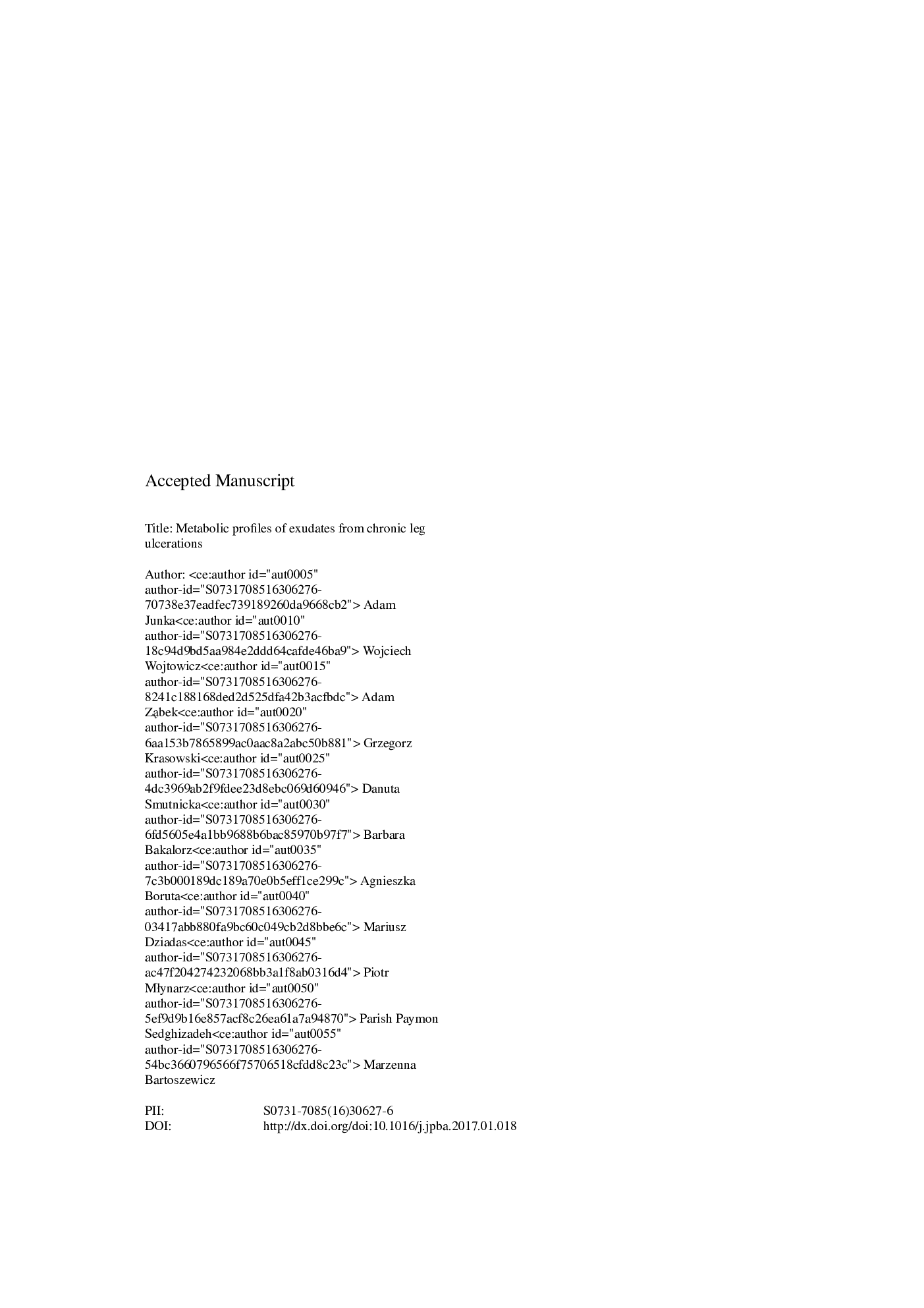| Article ID | Journal | Published Year | Pages | File Type |
|---|---|---|---|---|
| 5138315 | Journal of Pharmaceutical and Biomedical Analysis | 2017 | 30 Pages |
Abstract
Chronic leg ulceration is a disease usually associated with other comorbidities, and significantly reduces patient quality of life. Infected leg ulcers can lead to limb-threatening sequelae or mortality. Leg ulcerations are colonized by a number of microbes that are able to cause life-threating infections in susceptible patients. Wound exudate is a body fluid that collects metabolites from patient eukaryotic cells and from prokaryotic bacterial communities inhabiting the wound. This study aimed at identification of metabolites in exudates collected from chronic leg ulcers, and correlation of this metabolome with patient comorbidities and microbiological status of the wound. By means of NMR spectroscopy we detected 42 metabolites of microbial or patient origin. The metabolites that were in abundance in exudates analyzed were lactate, lysine, and leucine. Metabolites were associated with the presence of neutrophils in wounds and destruction of high quantities of microbes, but also with hypoxia typical for venous insufficiency. The combination of nuclear magnetic resonance spectroscopy technique and partial least squares discriminant analysis allowed us to further discriminate groups of metabolites with regards to potential clinical meaning. For example, to discriminate between S.aureus versus all other isolated microbial species, or between patients suffering from type I or II diabetes versus patients without diabetes. Therefore, wound exudate seems to be highly applicable material for discriminant analysis performed with the use of NMR technique to provide for rapid metabolomics of chronic wound status.
Related Topics
Physical Sciences and Engineering
Chemistry
Analytical Chemistry
Authors
Adam Junka, Wojciech Wojtowicz, Adam ZÄ
bek, Grzegorz Krasowski, Danuta Smutnicka, Barbara Bakalorz, Agnieszka Boruta, Mariusz Dziadas, Piotr MÅynarz, Parish Paymon Sedghizadeh, Marzenna Bartoszewicz,
